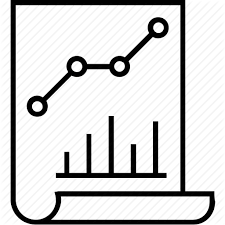Assessment of competitiveness on the light industry goods market
Abstract
The article examines the status and development of the apparel market in Uzbekistan, and changes in its structure based on marketing research and evaluates the impact of changes in the retail segment of the apparel market, the composition of the consumer market of garments, and the changes in consumer segment. Based on the competitive position on the assortment of retail clothing, strategies for pushing the garments from China, Turkey and other countries into the domestic market for each assortment of clothing are identified. Changes in consumption by squeezing an assortment of competing countries from the domestic market are studied on the basis of panel research, and a matrix of factors influencing its formation and wardrobe formation.
References
Soliev A. Marketing. –T .: Itisod-moly. 2010, 222 bp
Pankrukhin A.P. Marketing / Guild of Marketers. - 3rd ed. - M .: Omega-L, 2005 .-- 656 s
Boltabaev M .. Marketing strategies for developing export potential of the textile industry of the Republic of Uzbekistan. - Tashkent: TGUU, 2005. - 113 p.
Mboya J. Determinants of Competitive Advantage in the Textile and Apparel Industry in Tanzania: The Application of Porter’s Diamond Model. British Journal of Economics, Management&Trade 7(2): 128-147, 2015;
Cline W. The future of international trade in textiles and apparel. Washington: In.International Economics. 1992. 225.;
Doeringer P., Crean, S. Can fast fashion save the U.S. apparel industry. Socio-Economic Review, 4(3), 2006. 353–377.;
Dickerson K.G. Textiles and apparel in the global economy. 3rd ed. NJ: M$P–Hall.;
Nordas H. K. (2004). The global textile and clothing industry post the agreement on textiles and clothing. World and I, 7.;
Verma S. Export competitiveness of Indian textile and garment industry. Indian Council for Research on International Economic Relations. Working paper No. 2002. p 94.;
Juyoung Lee. (2013) Competitiveness of textile and apparel industries in the United States and Japan. Iowa State University. Digital Repository@ISU. Dissertations;
Xiajun A, Dorothe´e H. Assortment planning for vertically differentiated products. Production and Operations Management Society. Vol. 21, No. 2, March–April 2012, pp. 253–275;
Mayukh D. Brand vulnerability to product assortments and prices. Journal of Marketing Management, 2013 Vol. 29, Nos. 7–8, 735–754;

In submitting the manuscript to the International Journal on Integrated Education (IJIE), the authors certify that:
- They are authorized by their co-authors to enter into these arrangements.
- The work described has not been formally published before, except in the form of an abstract or as part of a published lecture, review, thesis, or overlay journal.
- That it is not under consideration for publication elsewhere,
- The publication has been approved by the author(s) and by responsible authorities – tacitly or explicitly – of the institutes where the work has been carried out.
- They secure the right to reproduce any material that has already been published or copyrighted elsewhere.
- They agree to the following license and copyright agreement.
License and Copyright Agreement
Authors who publish with International Journal on Integrated Education (IJIE) agree to the following terms:
Authors retain copyright and grant the International Journal on Integrated Education (IJIE) right of first publication with the work simultaneously licensed under Creative Commons Attribution License (CC BY 4.0) that allows others to share the work with an acknowledgment of the work's authorship and initial publication in this journal.





1.png)
